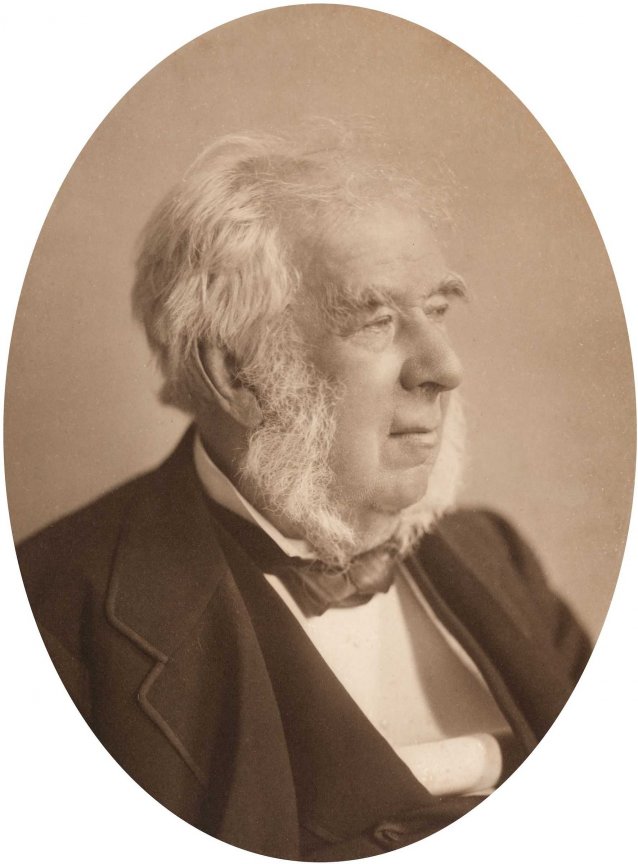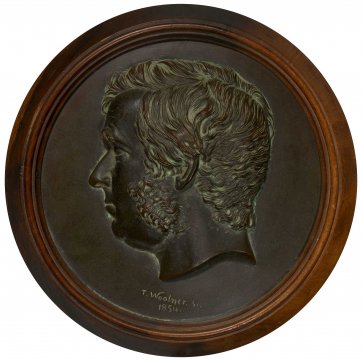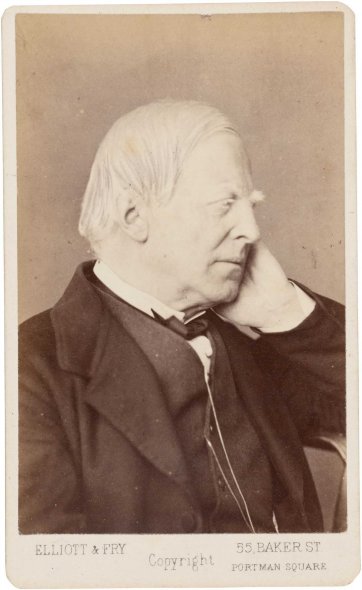Sir Charles Nicholson (1808-1903), statesman, landowner, businessman, connoisseur, scholar and physician, was born illegitimately into unpropitious circumstances in Yorkshire. Raised by relatives, he went to school in York and was admitted to study medicine at Edinburgh. He graduated brilliantly in 1833, having written his thesis, on asphyxiation, in Latin. Later that year he moved to New South Wales, where his uncle had property, to work as a physician specialising in obstetrics in Sydney. By 1840, an inheritance from an English uncle enabled him to begin investing in land, sheep and interests in shipping and railways. At the same time, he was active in the governance and administration of public institutions including the Gaslight Co, the savings bank and the museum. In 1843 he became the member for Port Phillip on the Legislative Council; he was its speaker from 1846 to 1856. At the same time, he was collecting rare books, antiquities, pictures and manuscripts. By 1850 he had a mansion at Luddenham and lived in Tarmons at Potts Point (he also lived at Lindesay, Darling Point, where the young WC Windeyer was a frequent guest). At that time, he joined Wentworth in urging a university for Sydney; he was a member of the original senate of Sydney University and was its provost (chancellor) from 1854 to 1862. He exerted great influence over its design and character, lobbying for the adoption of Edmund Blacket’s plans for the buildings and in 1857 securing a Royal Charter that put its degrees on a par with those from old British universities. He was a fellow of the senate until 1883, and over many years scouted out staff and antiquities for the institution (his own collection was the foundation collection of the university’s Nicholson Museum). Knighted in 1852, he sold Tarmons to the Sisters of Charity in 1855 and went to Egypt for three years; there, he scouted out antiquities that he sent back to the university in Sydney. From England, he returned to the colonies; he was created a baronet in 1859 and in 1860 became the first president of the Legislative Council in the new Queensland, where he had large landholdings around Rockhampton. He repatriated to England in 1862, married in 1865, and became a consultant on Australian affairs in London, rather like Joseph Banks had been in the early nineteenth century. In the 1860s and 1870s he engaged in archaeology in the Channel Islands, Jutland and England and supported the Egyptian Exploration Fund. While he studied Hebrew, his business interests expanded to The London, Liverpool and Globe Insurance Co; the Peninsular and Oriental Steamship Co; and Persian enterprises. Even in his nineties, he was enquiring whether the University of Melbourne library had a copy of the Hebrew Pentateuch; the university’s Edward Ellis Morris wrote ‘It is like all that I have heard of Sir Charles, and I wish we had out here some rich men like him. What I like about the proposal is also that it may suggest to others that such a library as ours is a worthy recipient of benefactions. It sadly needs endowment, & I wish I had influence with some wealthy Victorian colonist and could direct his will! Who will be our Sir Thomas Bodley? The position is still open.’ Nicholson was 95 when he died. His publications included Ægyptiaca, Comprising a Catalogue of Egyptian Antiquities … Now Deposited in the Museum of Sydney (1891) as well as several pamphlets on Australia's resources and prospects.
Gift of Stephen Scheding and Jim Berry 2015
The National Portrait Gallery respects the artistic and intellectual property rights of others. Works of art from the collection are reproduced as per the
Australian Copyright Act 1968 (Cth). The use of images of works from the collection may be restricted under the Act. Requests for a reproduction of a work of art can be made through a
Reproduction request. For further information please contact
NPG Copyright.


















